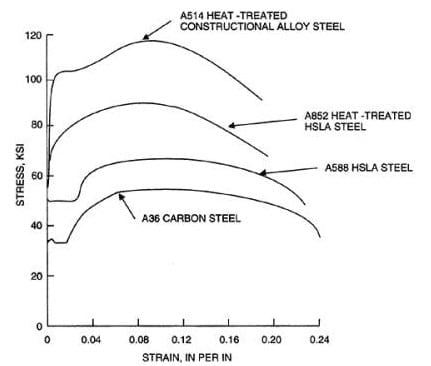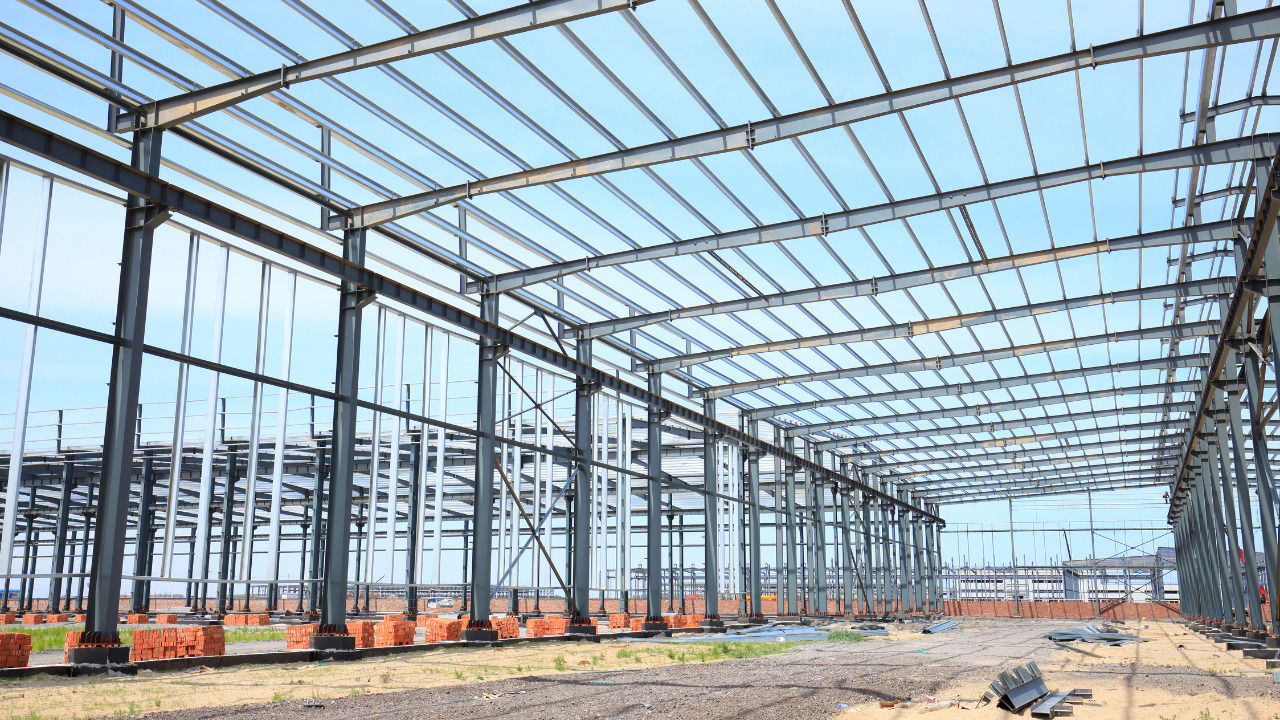Table of Contents
Properties of Structural Steel
Design and construction of steel structures depends on the properties of structural structures. Different properties of steel and their importance in design and construction of steel structures are discussed.
Structural Steel Design and Construction
Properties of Structural Steel
Properties of structural steel include:
- Tensile properties
- Shear properties
- Hardness
- Creep
- Relaxation
- Fatigue
Tensile Properties of Structural Steel
There are different categories of steel structures which can be used in the construction of steel buildings. Typical stress strain curves for various classes of structural steel, which are derived from steel tensile test, are shown in Figure 2.
The initial part of the curve represents steel elastic limit. In this range, steel structure deformation is not permanent, and the steel regain its original shape upon the removal of the load.
Typical Stress Strain Curve Different Classes of Structural Steel
The elastic modulus of all steel classes is same and equal to 200000MPa or 2×106 MPa. As the load on the steel is increased, it would yield at a certain point after which plastic range will be reached.
The yield point is the point at which steel specimen reach 0.002 strain under the effect of specific stress (yield stress).
Ductility of steel structure as shown in Figure-3 is crucial properties that allow redistribution of stress in continuous steel elements. Ductility is expressed by percentage of steel cross sectional reduction.
Stress Strain Curve of Structural Steel
As far as poisons ratio is concerned, it is the ratio of transverse strain to axial strain and it is about 0.30 and 0.50 in elastic and plastic range, respectively.
Regarding cold working of structural steel, it is the process in which different shapes of steel structure are produced at room temperature.
Consequently, steel structure ductility is increased but its ductility is reduced. Residual stress is a stress that stays in steel element after it has been fabricated.
It is necessary to consider strain rate while tensile test is conducted because it modifies steel tensile properties.
If steel structure is used for dynamic loads, then high strain rate would be considered. However, normal strain rate is adopted for steel used in the construction of structure designed for static loads.
The ability of steel structure to accommodate energy is called steel toughness.
Shear Properties of Structural Steel
Shear strength of steel structure is specified at the failure under shear stress and it is about 0.57 times yield stress of structural steel.
Regarding elastic shear modulus, it is expressed as the ratio of shear stress to shear strain in elastic range of steel structure.
Commonly, elastic shear modulus of steel structure can be taken as 75.84Gpa or the following formula can be used to compute elastic shear modulus.
Where:
G: Steel structure shear elastic modulus
E: Modulus of elasticity of steel structure
: Position’s ratio
Hardness of Structural Steel
Hardness is the measure of ability of steel structure to withstand inelastic deformation. Standard test methods and definitions for mechanical testing of steel products (A370-05) specify three different tests to evaluate steel hardness namely: Brinell, Rockwell and portable.
Any of these tests can be used to estimate steel structure hardness. Not only is the steel structure hardness used to examine the uniformity of different products but also to evaluate steel tensile strength.
Rockwell Test for Structural Steel Hardness Evaluation
Creep of Structural Steel Relaxation
Creep is gradual variation of strain of steel structure under constant stress. It occurs due to the influence of constant stress and the effect of fire.
Creep property is insignificant for structural steel frame design and construction apart from the case in which the effect of fire should be taken into consideration.
Structural Steel Relaxation
It is a step by step reduction of structural steel under a constant stress. Usually, yield strength of steel structure increases around 5% over stress relieved strain and the steel structure would suffer from plastic elongation which around 0.01.
Fatigue of Structural Steel
Fatigue is the failure of steel structure due to crack initiation and development under the influence of cyclic loading. Various tests are available to evaluate structural steel fatigue such as flexure test, rotating beam test and axial load test.
Fatigue Test of Structural Steel










